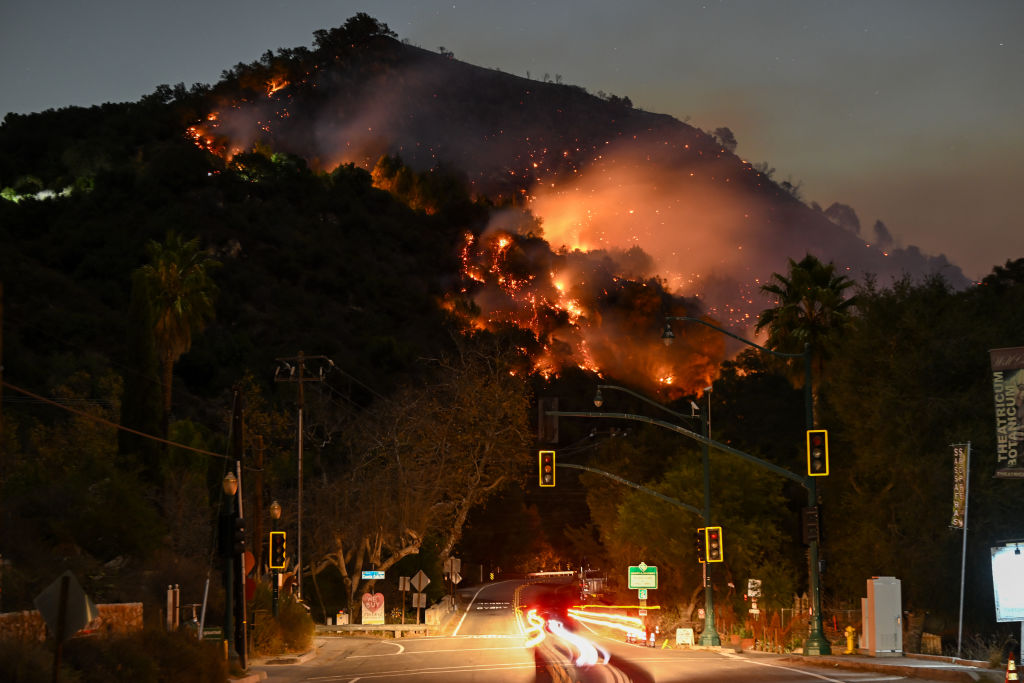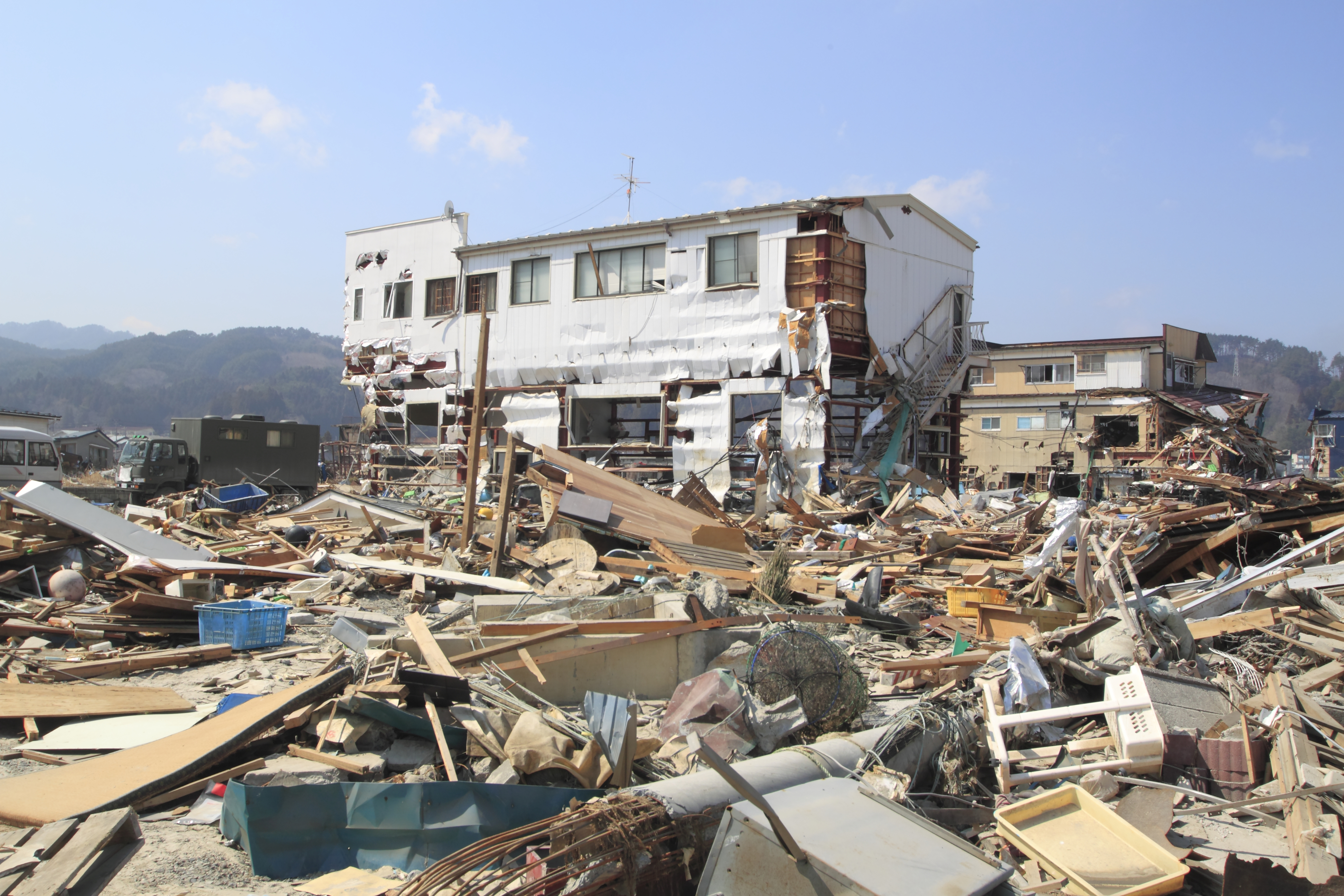California's Home Insurance Crisis: Rising Risks, Soaring Costs and Limited Options
As wildfires intensify across California, insurers retreat, leaving homeowners with fewer coverage choices and higher costs. Learn what’s next for the California insurance market.


A series of catastrophic wildfires have been tearing through the Los Angeles metropolitan area, driven by prolonged drought, critically low humidity and hurricane-force Santa Ana winds. The fast-moving fires consumed thousands of acres, destroying entire neighborhoods, displacing tens of thousands of residents and overwhelming emergency response efforts, in what may turn out to be one of the most expensive natural disasters in U.S. history.
According to the EPA, wildfire season begins earlier, lasts longer and sees fires occurring more frequently due to the effects of climate change. Residents affected by the Los Angeles wildfires will face a cycle of rebuilding and risk management for years to come as policymakers and insurers struggle to balance financial sustainability with the need for protection in high-risk areas.
As the recovery begins, insurance companies are again reassessing coverage in wildfire-prone regions, citing mounting losses and increased risk. This comes as homeowners across the state have been facing a worsening insurance crisis with rising premiums, policy cancellations and limited coverage options. This instability has led several major insurers to scale back or withdraw from the California home insurance market entirely, citing excessive risk and financial exposure. Here's what to know.

Sign up for Kiplinger’s Free E-Newsletters
Profit and prosper with the best of expert advice on investing, taxes, retirement, personal finance and more - straight to your e-mail.
Profit and prosper with the best of expert advice - straight to your e-mail.
Why have major insurance companies pulled out of California?
California's current home insurance challenges can be traced back to Proposition 103. This law, enacted in 1988, requires insurers to obtain approval from the California Department of Insurance before increasing premiums, aiming to prevent steep rate hikes. While originally intended to protect consumers, it now limits insurers' ability to adjust rates in response to rising wildfire risks, forcing some companies to exit the insurance market.
In 2024, California introduced new insurance regulations in response to escalating natural disaster risks. The new rules allow insurers to factor climate change risks into their pricing models and pass reinsurance costs — the coverage they buy to protect themselves from catastrophic losses — directly to policyholders. The goal is to balance risk exposure with financial sustainability so insurers can continue offering coverage without facing overwhelming losses.
The new rules implemented before the 2025 wildfires did help some insurance companies provide home insurance policies in high-risk areas. Farmers Insurance, for example, resumed issuing policies in certain areas, though often with stricter terms, higher premiums and coverage caps.
The 2025 Los Angeles wildfires have caused an estimated $135 to $150 billion in damages, leaving thousands of homeowners facing the daunting task of filing insurance claims and getting the insurer to pay. However, for many, the frustration doesn’t end there. In recent years, claim denials have increased, leaving policyholders without the financial relief they expected to rebuild their lives.
Some homeowners are discovering, often too late, that their home insurance policies don't cover certain wildfire-related damages, while others are finding that reimbursement caps fail to cover today’s skyrocketing rebuilding costs. Three of California’s largest home insurance companies denied nearly half of their claims in 2023 — a rate significantly higher than the national average — according to a report by Weiss Ratings.
Nationally, home insurers denied 37% of claims in 2023, a sharp increase from 25% two decades ago, according to data from the National Association of Insurance Commissioners (NAIC). Farmers Insurance affiliates led with a 49.7% denial rate, followed closely by two USAA affiliates at 48% and Allstate Insurance at 47.1%.
These growing denial rates mean that even those who maintained coverage were left struggling, as many discovered their policies excluded certain wildfire-related damages or imposed reimbursement caps that fell far short of today’s skyrocketing rebuilding costs.
What is the California FAIR Plan?
As a result of insurers leaving the state, many homeowners turned to the state-run California FAIR Plan for home insurance coverage. The FAIR Plan, which stands for Fair Access to Insurance Requirements, provides basic protection for those in high-risk areas who can’t obtain standard homeowners insurance coverage.
Funded by private insurance companies that operate in the state, it offers a safety net but often requires homeowners to purchase supplemental policies for broader coverage, increasing overall costs.
Which insurers left or limited coverage in California?
Rising wildfire risks and increasing financial losses have forced many insurance companies to reassess their presence in California.
Here’s a list of major insurers that have scaled back coverage or exited the market entirely:
- Allstate - Paused new homeowners, condo and commercial insurance policies in California as of November 2022.
- AmGUARD - Stopped writing homeowners policies in California in 2023.
- American National - Began limiting its exposure in wildfire-prone areas of California in 2023.
- Chubb - Began reducing coverage in wildfire-prone areas in California as of 2021.
- Farmers Insurance Group - Limited coverage in California in 2023. A subsidiary, Farmers Direct Property and Casualty Insurance Company, withdrew completely.
- Falls Lake Insurance - Completely withdrew from California in 2023.
- Nationwide - Subsidiary Crestbrook Insurance stopped writing new policies in December 2023 and plans to stop renewing all policies by June 15, 2025.
- State Farm - Stopped accepting new applications for homeowners, business and casualty insurance in May 2023.
- The Hartford - Announced limitations on coverage in high-risk areas of California starting in 2023.
- Tokio Marine Holdings - Stopped renewing 12,556 policies in California as of July 2023.
- Travelers - Began scaling back homeowners coverage in California in 2023.
- USAA - Implemented restrictions for new California property insurance policies in March 2024.
What’s next for California’s home insurance market?
Higher insurance premiums are expected to remain the norm in California, especially in high-risk regions where wildfire threats are most severe. Recent regulatory changes allowing insurers to factor climate data and reinsurance costs into pricing will likely drive rates even higher.
This shift raises serious concerns about long-term affordability, particularly for homeowners in vulnerable areas where securing coverage is already challenging. Addressing these issues will require market flexibility and proactive collaboration among state regulators, insurance companies and policymakers.
Taking proactive steps now to understand your coverage and explore available options can help you stay protected in an ever-evolving insurance landscape.
Tips for protecting your home and finances in disaster-prone areas
Living in a region vulnerable to climate-related disasters like wildfires, hurricanes or floods means your insurance needs can change quickly.
These tips can help you stay prepared as policies and coverage options evolve:
- Review your insurance policies regularly: Make sure your coverage matches the current rebuilding costs and potential disaster risks your area is experiencing.
- Explore additional coverage options: Look into supplemental policies for uncovered risks, such as flood or wildfire endorsements.
- Reduce your property’s risk profile: Take preventive measures like creating a defensible space or installing storm shutters — many insurers offer discounts for mitigation efforts.
- Compare insurers and coverage options: Seek quotes from both national and regional providers specializing in high-risk home insurance coverage.
- Understand state-backed insurance plans: If standard coverage is unavailable, state programs can offer basic protection. However, these plans often provide limited coverage, so you may need additional policies to ensure full protection.
- Stay informed about policy changes: Monitor state and federal insurance regulations that may affect rates and coverage availability.
In the face of increasing climate-related disasters and evolving insurance challenges, staying informed and proactive is key for anyone living in a high-risk location.
As the market continues to adjust to rising climate threats, regularly reviewing your coverage, exploring supplemental options and taking preventive measures can help safeguard both your home and finances.
Compare home insurance rates today by using our tool, in partnership with Bankrate, below:
RELATED CONTENT
Get Kiplinger Today newsletter — free
Profit and prosper with the best of Kiplinger's advice on investing, taxes, retirement, personal finance and much more. Delivered daily. Enter your email in the box and click Sign Me Up.

Carla Ayers joined Kiplinger in 2024 as the E-Commerce & Personal Finance Editor. She earned a master's degree in Integrated Marketing Communications from Eastern Michigan University. Her professional background spans both commercial and residential real estate, enriching her writing with firsthand industry insights. She is passionate about making complex real estate and financial topics accessible for all readers. Dedicated to transparency and clarity, her ultimate goal is to help her audience make informed and confident decisions in their financial pursuits.
-
 Stock Market Today: Dow Drops 971 Points as Powell Pressure Ramps Up
Stock Market Today: Dow Drops 971 Points as Powell Pressure Ramps UpPresident Trump is increasing his attacks against Jerome Powell, insisting the Fed chair cut interest rates.
By Karee Venema
-
 Get Netflix, Hulu and Apple TV Plus for Free by Joining T-Mobile
Get Netflix, Hulu and Apple TV Plus for Free by Joining T-MobileT-Mobile customers save up to $35/month on streaming services thanks to this Netflix, Hulu and Apple TV Plus bundle. Here’s how to get it.
By Rachael Green
-
 Five Easy Weatherproofing Projects That Help Prevent Damage and Save on Insurance
Five Easy Weatherproofing Projects That Help Prevent Damage and Save on InsuranceProtect your home from storms and water damage with these simple weatherproofing upgrades — some may help reduce your home insurance premium.
By Paige Cerulli
-
 Is Your Car Model Driving Up Your Insurance Premium?
Is Your Car Model Driving Up Your Insurance Premium?Car insurance rates vary by make and model. Find out if your car is raising or lowering your premium.
By Rachael Green
-
 Don’t Get Burned: Six Summer Disasters Your Home Insurance Might Not Cover
Don’t Get Burned: Six Summer Disasters Your Home Insurance Might Not CoverHome insurance doesn’t cover everything. Learn which disasters require extra coverage — and how to protect your home before it’s too late.
By Jacob Wolinsky
-
 Should You Get Earthquake Insurance?
Should You Get Earthquake Insurance?Standard home insurance doesn’t cover earthquakes, but paying extra for earthquake insurance isn’t just for Californians.
By Rachael Green
-
 Should You Get Auto or Home Insurance Through Costco?
Should You Get Auto or Home Insurance Through Costco?Costco members can access discounted insurance through Connect by American Family — but is it really a better deal?
By Paige Cerulli
-
 How to Lower Home Insurance Rates When Climate Change Increases Costs
How to Lower Home Insurance Rates When Climate Change Increases CostsA top insurer warns the damage climate change causes is making it cost-prohibitive for insurers in some areas. Learn how to protect your home and lower costs.
By Sean Jackson
-
 Four Things You Can Do If Your Home Insurance Is Canceled or Not Renewed
Four Things You Can Do If Your Home Insurance Is Canceled or Not RenewedDon't panic — here's how to understand your notice, switch coverage and protect your home after a policy nonrenewal or cancellation.
By Ben Luthi
-
 See How Much Auto Tariffs Could Raise Your Car Insurance Rates
See How Much Auto Tariffs Could Raise Your Car Insurance RatesPresident Donald Trump issued a 25% tariff on all car imports. See how this tariff impacts the cost of your car insurance.
By Sean Jackson